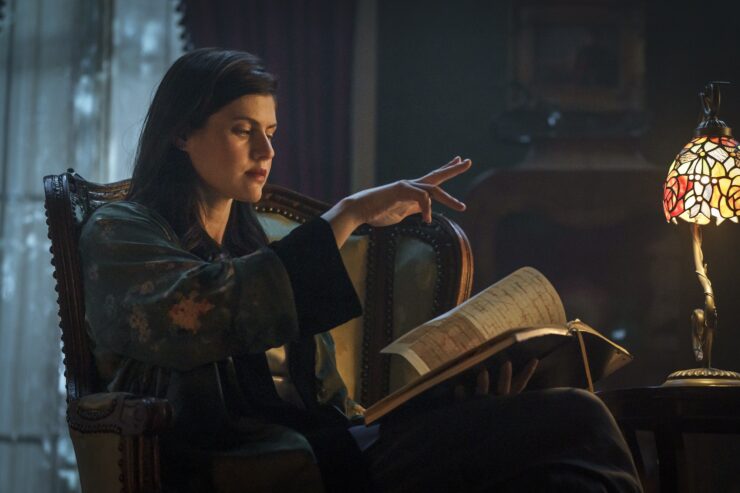
www.newsbusters.org
ABC Downplays Kamala Battling FNC’s Baier, Bashes Trump on Abortion, January 6 Instead
ABC’s Good Morning America illustrated all anyone needed to know Thursday about what it made of Vice President Kamala Harris’s Wednesday night throwdown with Fox News host Bret Baier by the fact that it spent far less time (three minutes and two seconds) on this than they did browbeating former President Trump (four minutes and 11 seconds) over their preferred topics for this election, abortion and January 6.
Co-host George Stephanopoulos understood the assignment, claiming in a tease Wednesday’s 2024 discourse was about “January 6, mental stability and immigration” with Harris trying “to win over Republicans and blasts former President Trump as unstable and dangerous” and Trump “push[ed] claims about the 2020 election and the January 6 attack on the Capitol” and “abortion bans.”
Mary Bruce — chief White House correspondent and resident North Korean news lady for the Harris regime — must have received the message about our daily lambasting and decided to tone it down a smidgen, noting “she was pressed on her record” in a “heated” sit-down.
Bruce even admitted Harris never “pinpoint[ed] any major policy shifts” she’d have from President Biden (click “expand’):
BRUCE: Kamala Harris overnight in some unfamiliar territory. Her first interview with Fox News as she tries to win over Republicans and this was contentious. She was pressed on her record, on the economy, on immigration and on many of Donald Trump’s attack lines. But Harris pushed back, trying to cast herself as the candidate of change and Donald Trump a danger to democracy. The interview heated from the start.
[BAIER-HARRIS CLIP]
BRUCE: After struggling in recent days to show how she would govern differently from President Biden, the Vice President trying to put a clear stance between herself and the administration she still serves in, but not pinpointing any major policy shifts.
HARRIS: Let me be very clear, my presidency will not be a continuation of Joe Biden’s presidency and, like every new president that comes into office, I will bring my life experiences, my professional experiences, and fresh and new ideas.
BRUCE: Fox’s Bret Baier pushing her on the administration’s record on immigration.
[BAIER-HARRIS CLIP]
BRUCE: Speaking to an audience traditionally of Trump supporters, Harris blasting the former President as unstable and dangerous, calling Trump out for increasingly threatening his political opponents, and what he calls the enemy from within.
This gave way to Stephanopoulos tossing to virulent Trump hater Rachel Scott with this swipe: “No matter what the planned subject is that day, it always comes back to January 6.”
“It always comes back to January 6, George,” Scott replied.
No, George and Rachel, everything about this election does not, in fact, come back to January 6. Try the economy, something neither has to worry about.
Scott giddily proclaimed Trump “is on defense about his record on abortion rights and also about January 6” and busy “doubling down on his anti-immigrant rhetoric” instead of “appeal[ing] to new voters.”
She cheered a Univision town hall attendee asking about January 6 before lecturing Trump about what happened that day before going to the other top issue of wealthy liberals who don’t have to worry about where their next meal comes from: killing babies.
Scott twice made sure to tell viewers that Trump “appointed three of the Supreme Court justices who supported overturning Roe v. Wade” and fear-mongered that his side of the aisle could, maybe, possibly ban IVF.
Over on CBS Mornings and NBC’s Today, they took a different approach by trying to make fetch happen and insist Republicans could swing the election for Harris by joining her in droves.
Chief election and campaign correspondent Robert Costa talked up his native Bucks County, Pennsylvania and the surrounding areas as fertile ground to help Harris win. He even added “Democrats are feeling very good about” how she did on Fox News (click “expand”):
DOKOUPIL: So, you’ve got Donald Trump going on Univision, you’ve got Kamala Harris going on Fox News. They’re kinda out of their comfort zones. What’s the strategy here?
COSTA: Just a few minutes before she sat down with Fox News, Vice President Harris had a big event in suburban Philadelphia making an overture to traditional Republicans. There’s a real belief inside the Democratic Party that Trump support is soft among some Republicans who have concerns about her character. That’s why she’s sitting down with Fox News. That’s why she’s going to Republican groups.
KING: How do you think she did? Some say she held her own. Other others say she fell apart. I think it depends on what — do you think it changed anybody’s mind going in?
COSTA: Democrats are feeling very good about her performance. They say she needs to make inroads in this closing lap. They think Trump’s support is soft, so why not try to eat into it by showing some engagement?
Prior to that sucking up, correspondent Ed O’Keefe admitted “Harris was pressed on what she’d do about immigration”, but also played into this narrative in touting Harris “us[ing] her time to bring up issues Fox News viewers don’t normally hear about, like how former Trump administration officials are speaking out against” Trump and “criticism of his rhetoric.”
Earth to Ed: Have you watched Fox News? You do know Democrats exist there?
As for Trump, O’Keefe said the former President “defended what happened on January 6, 2021” during the Univision town hall “and stood by spreading false claims that Haitian immigrants in Springfield, Ohio, are eating pets”. Regarding the Fox town hall, he too focused on IVF.
On NBC, co-host Hoda Kotb called the Baier interview “combative” and said Harris “[made] her case to undecided voters while putting distance between herself and President Biden.”
Chief White House correspondent Peter Alexander said this was a chance to speak to viewers on “conservative Fox News” “who rarely hear her unedited.”
Alexander didn’t acknowledge Harris never answered Baier’s questions, but instead boasted she “slamm[ed]” Trump on immigration and “seiz[ed] on Trump’s repeated comments attacking his political opponents[.]”
Before correspondent Garrett Haake came along to sing the same regime talking points on abortion, January 6, and “controversial comments about Democrats and immigrants,” Guthrie and Alexander played up Republicans for Harris as real and significant (click “expand”):
GUTHRIE: So tell us about this strategy, courting maybe undecided and potentially Republican voters who haven't signed on to Donald Trump yet.
ALEXANDER: Yeah, Savannah, that’s right. A Harris campaign official tells NBC News that the campaign really believes that movable voters here move late. They think that there are a number of Republicans, independents, as well, that are put off by Trump, including some who voted for former presidential candidate, Nikki Haley. Notably, she got nearly 17 percent, I think it was, of the primary vote in Pennsylvania. That’s why Harris campaigned with about 100 Republicans there in Pennsylvania yesterday, recently with Liz Cheney, vowing to put a Republican in her cabinet. To be very clear here, though, this is not going to change the minds of the vast majorities of Republican voters, who are locked in for Trump, but in our latest NBC News poll, about nine percent of Trump voters say they might change their vote, and Harris only needs, obviously, a sliver of those votes in key states like Pennsylvania, here in Wisconsin, where of course, the margins are so thin.
To see the relevant transcripts from October 17, click here (for ABC), here (for CBS), here (for NBC).

















